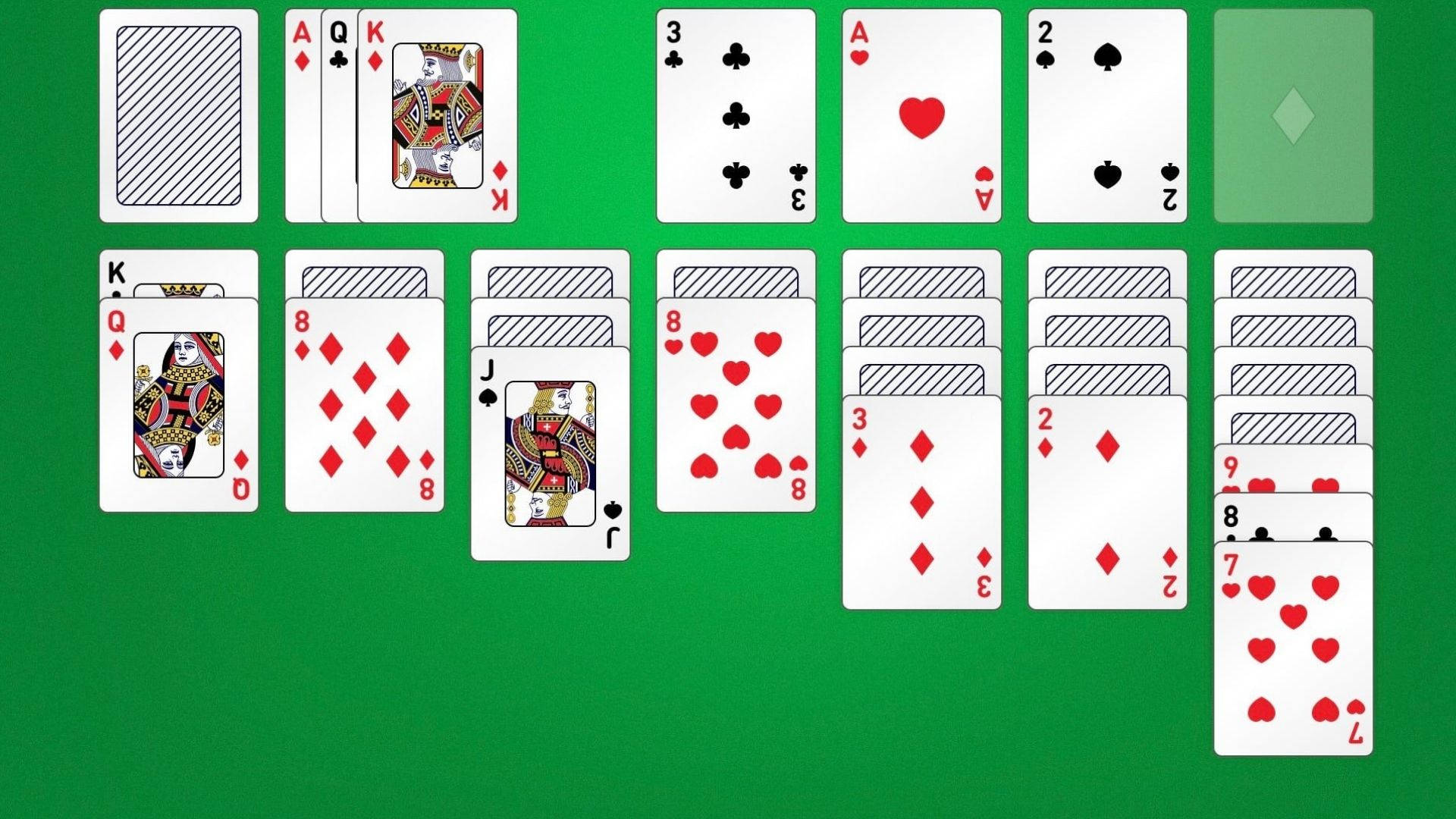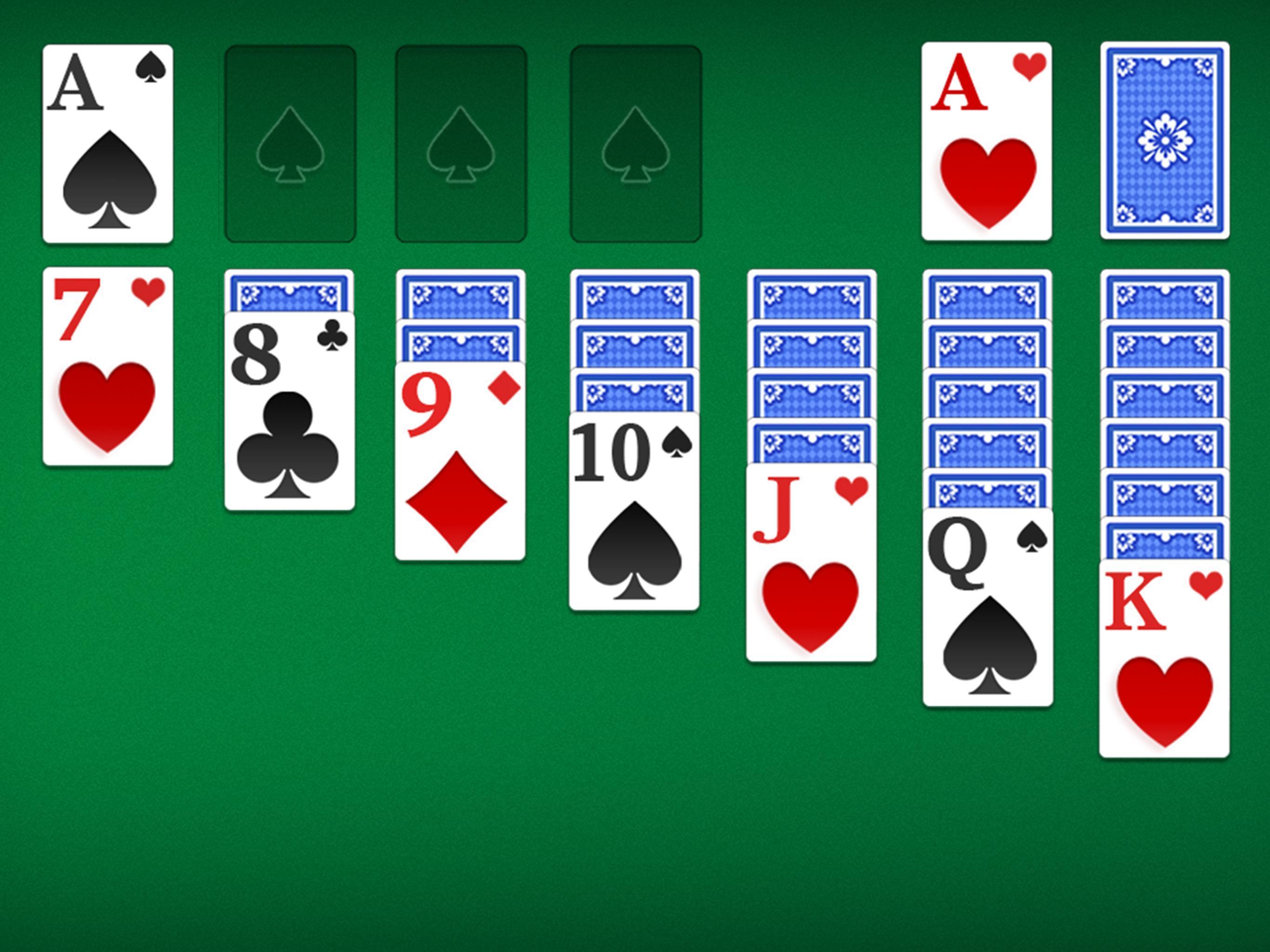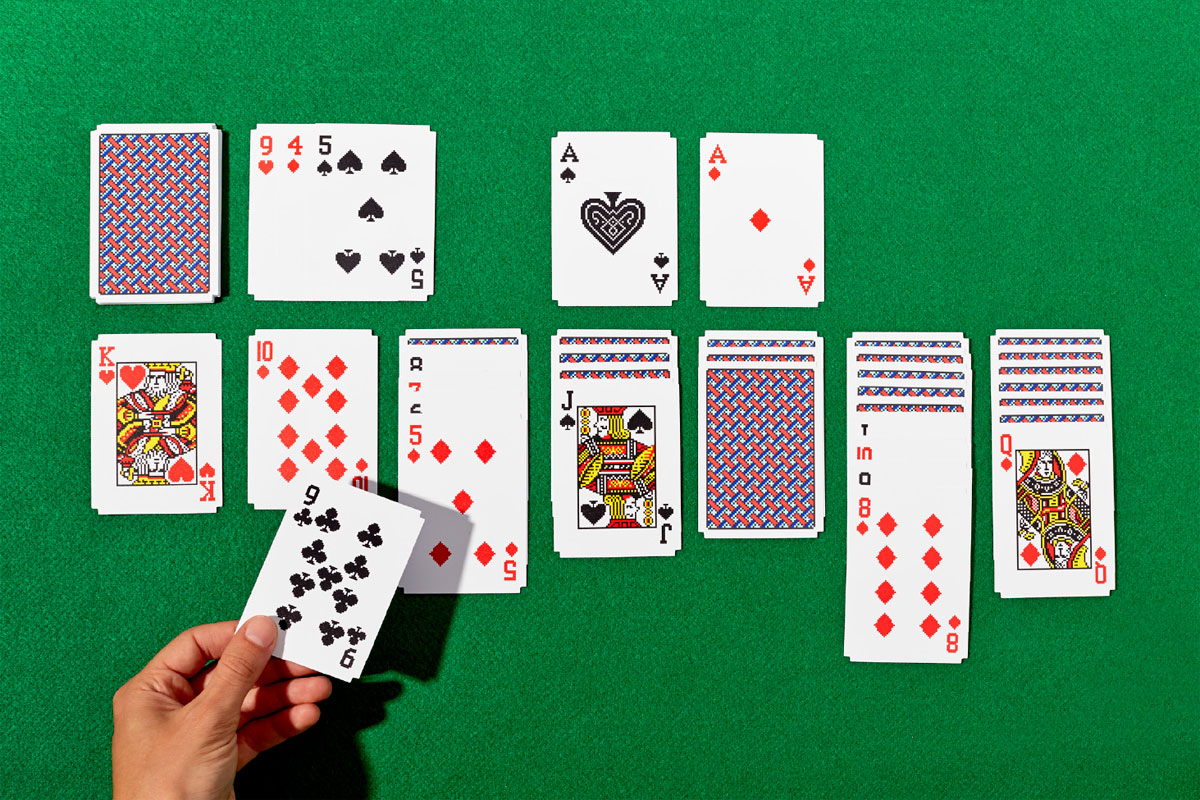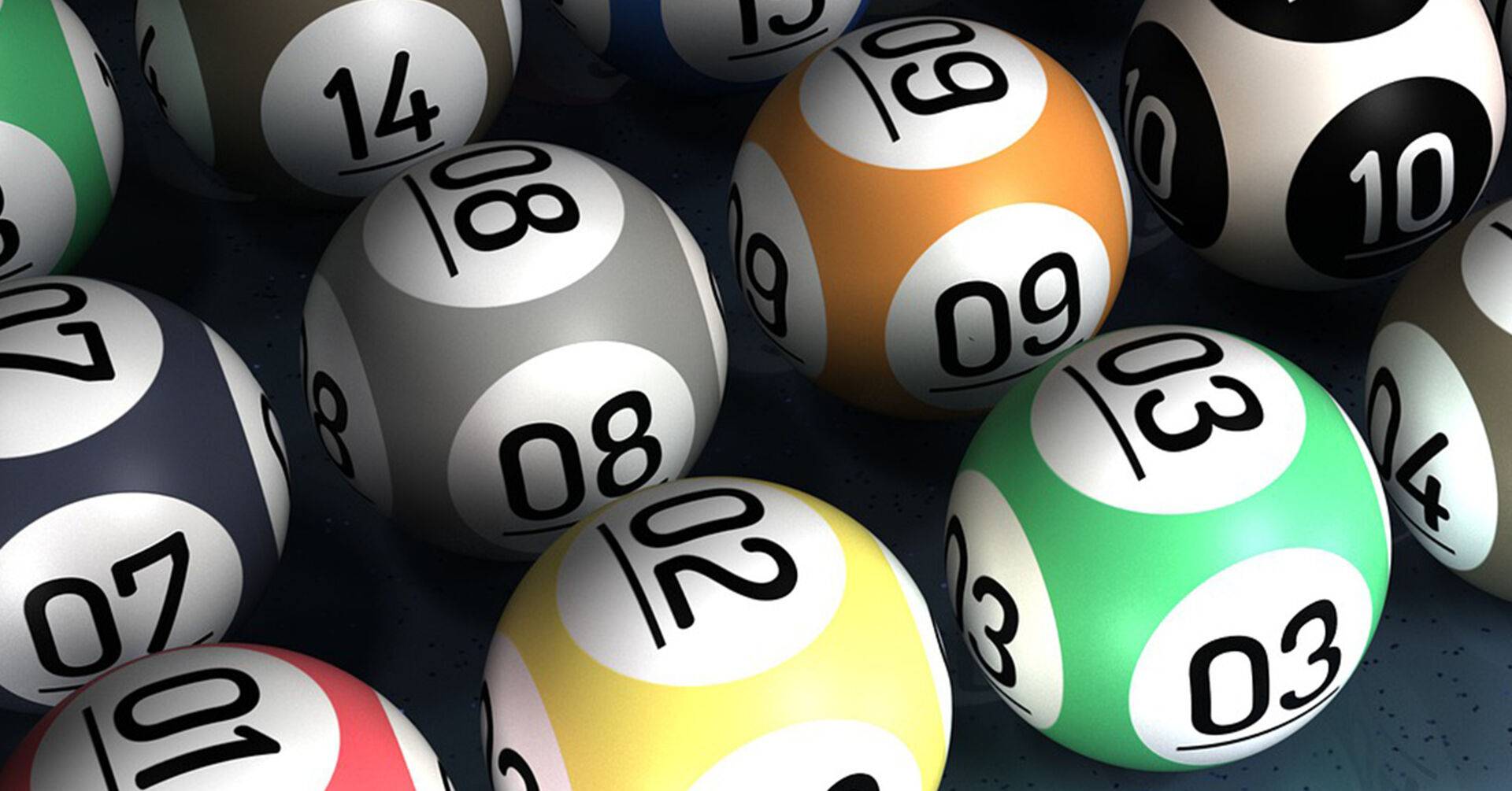Introduction
How Many Solitaire Games Are There: Solitaire, the classic card game that has stood the test of time, has evolved into a diverse and expansive collection of variations. With countless rule tweaks and unique adaptations, the world of solitaire offers an impressive array of games to suit every player’s preferences. Originating in the 18th century, the game of solitaire has experienced numerous transformations, both in physical and digital formats.
Traditional versions like Klondike and Spider remain popular staples, but many other lesser-known versions have gained popularity in recent years. From Pyramid and Freecell to Yukon and TriPeaks, each variant challenges players with its distinctive rules and gameplay mechanics.
With the advent of digital technology and online platforms, the availability of solitaire games has skyrocketed. Players can now access a vast selection of solitaire games through mobile apps, web browsers, and gaming platforms, making it more convenient than ever to enjoy a quick game during a break or while on the go.
Whether you prefer the simplicity of classic solitaire or seek the excitement of complex variations, the world of solitaire offers an endless source of entertainment and intellectual stimulation. So, take a moment to explore the diverse realm of solitaire games and discover the one that best suits your playing style and skill level. Embark on a solitary adventure, sharpen your mind, and indulge in the timeless pleasure of this beloved card game.

How many solitaire games are there?
With over 550 different solitaire games to choose from, including popular classic, as well as a wide range of lesser-known variations, there’s something for everyone in this comprehensive collection.
It is challenging to determine an exact number of solitaire games, as the term “solitaire” encompasses a vast range of card games played by oneself. Moreover, new variations and adaptations may continue to emerge over time. The number of solitaire games can vary depending on how one defines and classifies them.
However, it is safe to say that there are hundreds, if not thousands, of solitaire games that have been documented and played throughout history. Some are well-known and widely played, while others might be obscure or limited to specific regions.
To give you an idea, popular solitaire games like Klondike, Spider, Freecell, Pyramid, TriPeaks, and Yukon are just a few examples of the many variations available. Each of these games comes with its unique set of rules and challenges, providing players with diverse options to enjoy.
The digital age has further expanded the variety of solitaire games, with countless mobile apps, computer programs, and online platforms offering a wide selection of solitaire experiences.
How many rules are there in solitaire?
Seven piles To form the tableau, seven piles need to be created. Starting from left to right, place the first card face up to make the first pile, deal one card face down for the next six piles.
The number of rules in solitaire can vary significantly depending on the specific variant being played. While some versions of solitaire have relatively straightforward and simple rules, others may involve more complex and intricate gameplay.
Classic solitaire games like Klondike, for example, have relatively few rules. Players must arrange cards in descending order, alternating colors, and aim to build four foundation piles from Ace to King.
On the other hand, more intricate solitaire variations like Spider or Yukon may involve additional rules, such as building sequences in descending order within the tableau or moving groups of cards. Each variant may have its unique set of rules, adding depth and challenge to the gameplay.
Overall, solitaire’s beauty lies in its adaptability and versatility, allowing players to choose from a wide array of rule sets to suit their preferences. Whether opting for simplicity or complexity, solitaire offers an enjoyable and engaging solo card-playing experience for all who seek it.
How many parts are there in solitaire?
In Solitaire, there are four types of piles: the tableau, the stock, the waste, and the foundations. The tableau consists of seven piles. The first pile has one card, the second pile has two cards, the third pile has three cards, and so on until there are seven piles. Only the top card in each pile is face up.
In the context of solitaire card games, the term “parts” is not commonly used. Instead, solitaire games consist of specific elements, such as the tableau, foundation piles, stock or talon, and waste piles. These components may vary depending on the variant of solitaire being played. Let’s briefly describe each element:
Tableau: This is where most of the action takes place. It consists of a layout of cards, typically dealt face-down with a few face-up cards at the top. Players can move and arrange cards within the tableau following specific rules based on the variant being played.
Foundation Piles: The goal of many solitaire games is to build foundation piles, where cards are placed in ascending order and grouped by suit (Ace to King). The number of foundation piles can vary, but it’s often four.
Stock (Talon): This is the facedown pile of cards from which players draw new cards during the game. Some games allow one card to be drawn at a time, while others may have different rules for drawing from the stock.
Waste Pile: This is where discarded cards from the stock are placed. In some variations, players can recycle through the waste pile if the stock is exhausted.
While the terminology and specific rules can differ among solitaire games, understanding these basic elements will allow you to navigate and enjoy a variety of solitaire variants.
Are all solitaire games possible?
Not all Solitaire games are winnable, but the great majority is. On average, around 80% of every Solitaire game is winnable. FreeCell is the variant with the best odds, as around 99% of all games are winnable, for instance.
Not all solitaire games are guaranteed to be solvable. The solvability of a particular solitaire game depends on its specific rules, the initial card layout, and the player’s strategy. Some variants, like Klondike (the most common solitaire game), have a high solvability rate, with the majority of deals being winnable with the right moves.
However, certain solitaire games are intentionally designed to be more challenging and have a lower solvability rate. Games like Spider or FreeCell may present deals that are unsolvable due to the distribution of cards or the lack of available moves.
While it’s impossible to guarantee that every individual deal is solvable in all solitaire games, players can still enjoy the strategic and problem-solving aspects of the game. Even in challenging deals, skilled players can often find ways to maximize their chances of winning or improve their overall performance.
The element of uncertainty and the need for adaptable strategies add to the appeal of solitaire, making it a captivating and enjoyable pastime for players seeking both entertainment and mental stimulation.

Are there different versions of solitaire?
8 Different Types of Solitaire Games to Play Get step-by-step instructions on how to play different types of Solitaire games, including Classic, FreeCell, Pyramid, Golf, Yukon, Forty Thieves, Spider, and Canfield.
Solitaire is a broad category of card games that are typically played by one person, and each variant comes with its own set of rules, objectives, and gameplay mechanics. Some of the most well-known and widely played versions of solitaire include:
Klondike: Often referred to simply as “Solitaire,” this is the classic and most popular version where players aim to build foundation piles from Ace to King.
Spider Solitaire: Played with two decks of cards, the goal is to arrange cards in descending sequences and in the same suit to clear the tableau.
Freecell: Known for its strategic depth, players try to move all cards to foundation piles using four free cells as temporary storage.
Pyramid: In this variant, players remove pairs of cards that add up to 13 from a pyramid-shaped tableau.
TriPeaks: Players clear a tableau of cards by removing cards that are one rank higher or lower than the current card in the waste pile.
Yukon: Similar to Klondike, but all cards are dealt at the beginning, making it a more skill-based version.
How many games of solitaire are unbeatable?
The Odds of a Solitaire Game.The majority of solitaire games, almost 80%, are winnable. However, this doesn’t necessarily mean that players win 80% of the time. Some solitaire variations have higher odds of winning than others, with FreeCell having the highest chance and Pyramid Solitaire having the lowest.
The number of unbeatable games of solitaire, also known as unsolvable deals, varies depending on the specific variant being played. Certain versions of solitaire have a higher likelihood of being solvable, while others are designed to be more challenging, resulting in a higher number of unbeatable deals.
Classic solitaire games like Klondike, Spider, and Freecell have relatively low unsolvability rates, with the majority of deals being winnable with the right strategy and moves. Skilled players can often find ways to increase their chances of success even in more difficult deals.
However, more complex and less common solitaire variations may have a higher proportion of unbeatable deals. The combination of card distribution, rules, and limited moves in these games can make finding a winning solution exceedingly rare or even impossible in some cases.
Ultimately, the unsolvability of certain deals adds to the challenge and intrigue of solitaire, encouraging players to develop adaptable strategies and enjoy the thrill of attempting to conquer even the most daunting arrangements.
Which solitaire game is the hardest?
Trefoil is one of the hardest solitaire games to win. The base piles are started with the four aces, with 16 tableau piles of three cards each. You must build from the base piles in each suit, completing the piles with kings on top.
Determining the hardest solitaire game is subjective as it depends on individual playing styles and preferences. However, certain solitaire variants are generally considered more challenging due to their complex rules and limited options.
Spider Solitaire is often regarded as one of the hardest solitaire games. With two decks of cards and eight foundation piles to build, it requires careful planning and strategic thinking. Players must manage multiple tableau piles and consider each move’s long-term consequences.
Another challenging game is Freecell, known for its high level of skill required. While all cards are visible from the start, making it theoretically winnable, the limited number of free cells and foundation piles demand precise moves and foresight.
Yukon is also considered difficult, requiring careful maneuvering of cards between tableau piles and foundation stacks without the help of free cells.
Ultimately, the hardest solitaire game may vary from player to player based on their familiarity with the rules, problem-solving abilities, and willingness to persist through challenging scenarios. Regardless of the difficulty level, solitaire offers a rewarding experience that sharpens strategic thinking and patience.
What is the easiest game of solitaire to win?
Overview Aces Up (less commonly called Aces High, and other names like Firing Squad) is a classic and very easy solitaire game found in most books and collections. The tableau consists of four face-up piles, with an initial deal of just one card on each.
Among the various solitaire games, Klondike (also known as classic solitaire) is widely regarded as the easiest game to win. It is the most well-known and commonly played solitaire variant, making it accessible to players of all skill levels, including beginners.
Klondike’s straightforward rules involve building foundation piles in ascending order and by suit, starting with Aces and ending with Kings. The tableau layout is relatively simple, and players can quickly grasp the fundamentals of the game.
Moreover, many digital solitaire platforms offer helpful features like automatic movement and undo options, making it easier for players to correct mistakes and learn from their moves.
While Klondike may not guarantee a win in every deal, it has a high solvability rate compared to other solitaire variants, providing a sense of accomplishment and satisfaction to players as they achieve victory more frequently.
For those new to solitaire or seeking a relaxing and approachable experience, Klondike is an excellent choice to start their solo card gaming journey.

Conclusion
The world of solitaire games is a vast and captivating realm, offering a plethora of variations to suit every player’s taste and skill level. While it is challenging to determine an exact number, there are undoubtedly hundreds, if not thousands, of documented solitaire games. Each variant comes with its own unique set of rules, objectives, and complexities, creating a diverse array of options for solo card enthusiasts to explore.
From the timeless classic Klondike to the strategic Spider, the brain-teasing Freecell, and the intriguing Pyramid, solitaire games present an ever-expanding collection of challenges and entertainment. With the advent of digital technology and online platforms, the accessibility and availability of these games have grown even further, allowing players to enjoy a quick game on their mobile devices or computers anytime, anywhere.
The beauty of solitaire lies not only in its variety but also in its capacity to provide intellectual stimulation, improve problem-solving skills, and offer a relaxing pastime. Whether one seeks a simple and soothing game or a more demanding test of strategy, the world of solitaire delivers a satisfying experience that transcends generations.
As new ideas and adaptations continue to emerge, the landscape of solitaire games remains dynamic and full of surprises, promising endless hours of solitary enjoyment for card players around the world. So, whether you’re a seasoned enthusiast or a newcomer to the realm of solitaire, dive in and discover the countless adventures waiting to unfold as you shuffle, deal, and strategize your way to victory in these timeless solo card pursuits.









